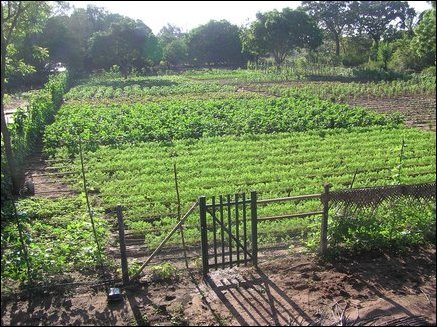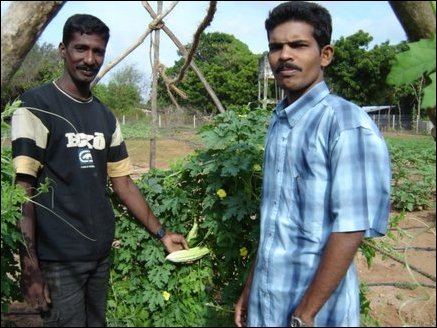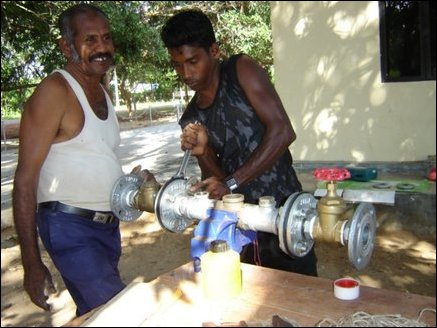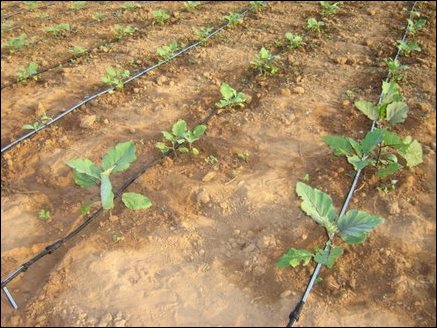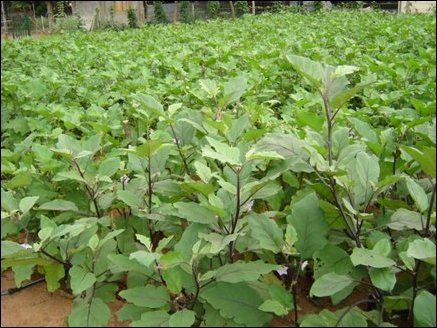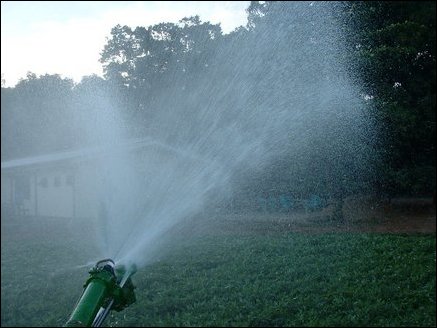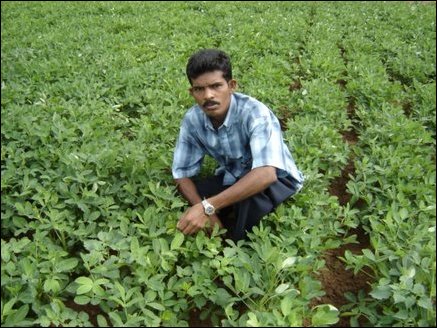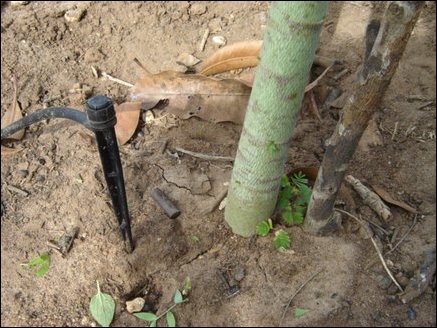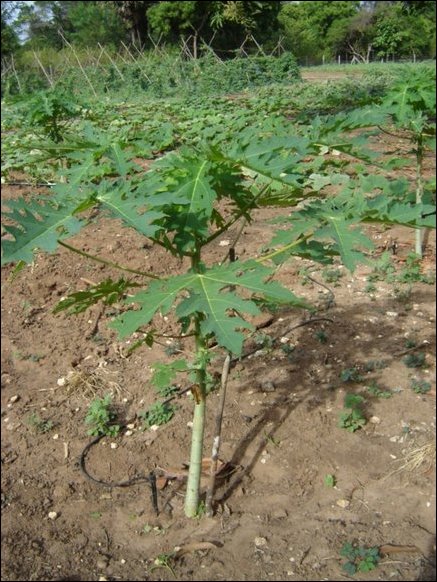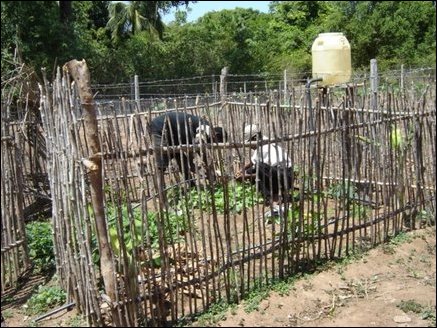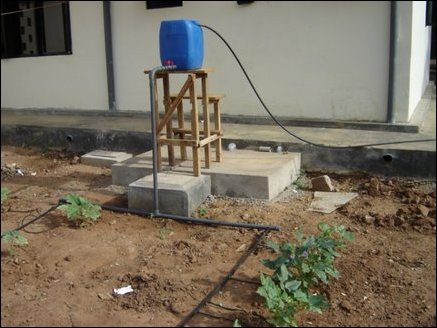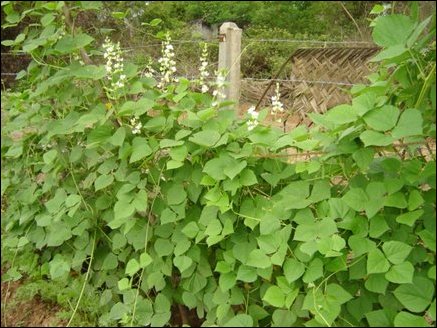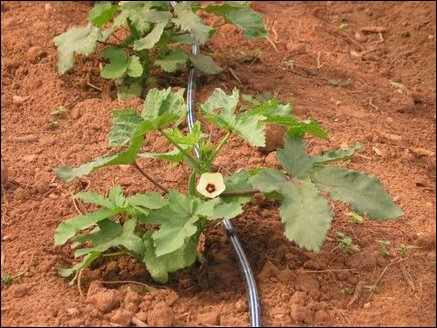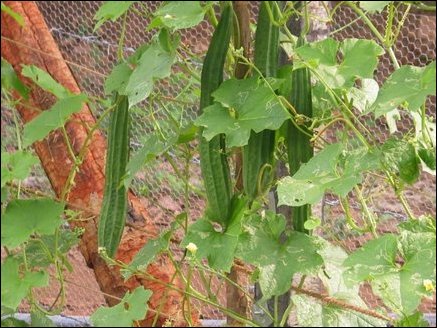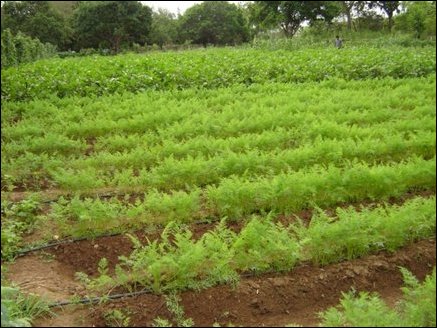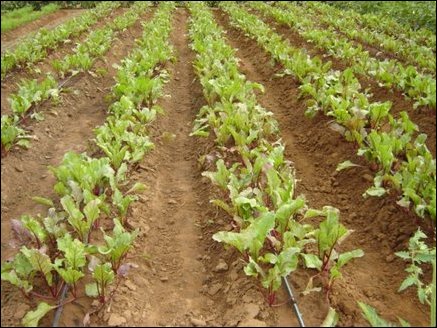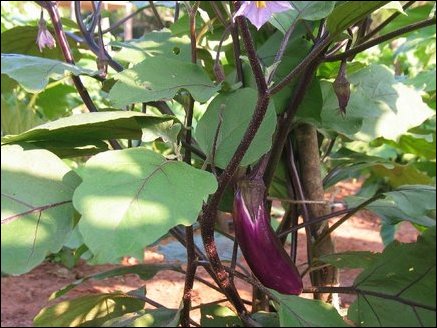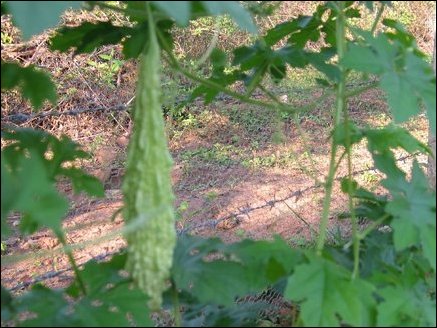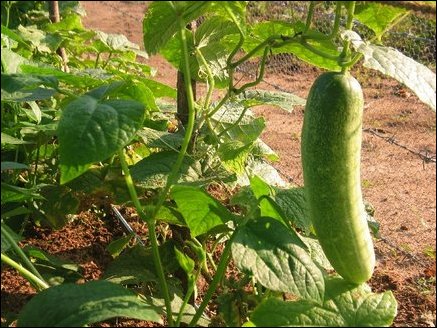Pilot irrigation project explores water conservation techniques
[TamilNet, Sunday, 11 September 2005, 04:16 GMT]A two-acre plot in Iranaimadu junction along A9 in Kilinochchi functions as a test bed to explore techniques in modern irrigation techniques that conserve water. Drip irrigation, bubbler systems, jets and micro irrigation techniques are being tested for optimum use of water. Experiments help identify suitability for practical use in the NorthEast districts where irrigation tanks and canals provide the main supply of water for agricultural use throughout the year. South Australian Tamil association is providing the financial support for this effort implemented through the NGO, The Economic Consultancy House (TECH).
1 of 19 Next>>
A view of the 2-acre field where 1.3 acres are occupied by cash crops (vegetables) and 0.7 acres are occupied by fruit crops.
<<Previous 2 of 19 Next>>
Shankar (28) from Santhapuram in Kilinochchi who tends to the plants at the pilot field and Mathan, Agricultural specialist, who supervises the pilot study.
<<Previous 3 of 19 Next>>
Workers installing necessary piping equipment for the deploying the network of pipes for drip irrigation.
<<Previous 4 of 19 Next>>
Rows of young egg-plant plants.
<<Previous 5 of 19 Next>>
Mature egg-plants ready to bear fruits. Drip irrigation is used for majority of vegetables.
<<Previous 6 of 19 Next>>
Jet system, also called "artificial rain maker" can irrigate up to 60 feet radius and is ideal for ground nuts and onions where plant densities are high and root penetration is low,
<<Previous 7 of 19 Next>>
Peanut crop irrrigated by jet spray every evening. Jet system is generally useful for crops with high planting density.
<<Previous 8 of 19 Next>>
Mini bubbler scheme where water is emitted in the form of little bubbles at a rate of 10-40 ltrs/hr is mainly used to irrigate fruit crops and palms,
<<Previous 9 of 19 Next>>
Young Papaya plant fed by a mini bubbler system. Papaya trees grow to 16-24 feet in height and is popular in NorthEast.
<<Previous 10 of 19 Next>>
Plot with fence to protect the plants such as tomato plants from monkeys. The fenced plot contains experimentation in micro irrigation system for use in home gardens.
<<Previous 11 of 19 Next>>
Micro irrigation setup ideal for a home garden, For a typical 10mx10m plot water can be fed from a 50 ltr can held at a height of one meter and water fed to plants through micro tubes.
<<Previous 12 of 19 Next>>
Long bean portion of the plot in the pilot study.
<<Previous 13 of 19 Next>>
Okra plant. Okra (also known as gumbo), is a tall-growing, warm-season, annual vegetable from the same family as hibiscus. The immature pods are used for soups, canning and stews or as a fried or boiled vegetable. Okra is a powerhouse of valuable nutrients. Nearly half of which is soluble fiber in the form of gums and pectins. Soluble fiber helps to lower serum cholesterol, reducing the risk of heart disease. Nearly 10% of the recommended levels of vitamin B6 and folic acid are also present in a half cup of cooked okra.
<<Previous 14 of 19 Next>>
Soft local gourd using wire net fence as support and fed by drip irrigation scheme.
<<Previous 15 of 19 Next>>
Carrot plot in the experimental field irrigated by a drip method. Carrots are rich in carotene (the source of vitamin A) and high in fiber and sugar content.
<<Previous 16 of 19 Next>>
Rows of Beet-root in the pilot study fed by drip irrigation. Beet tops are a source of vitamin A and the roots are a good source of vitamin C.
<<Previous 17 of 19 Next>>
Egg-plant, popular vegetable in NorthEast homes, is plentiful in the region's fields. Eggplant is a cold-sensitive vegetable that requires a long warm season for best yields
<<Previous 18 of 19 Next>>
Bitter gourd plant in the pilot scheme fed by drip irrigation system. The bitter gourd is used as a folk medicine for diabetes as it contains a hypoglycaemic or insulin-like principle, designated as 'plant-insulin.'
<<Previous 19 of 19
Drip irrigation scheme feeds water to many categories of vegetable plants including cucumber. Drip irrigation results in water savings, improves water penetration, and provides increased yields.



